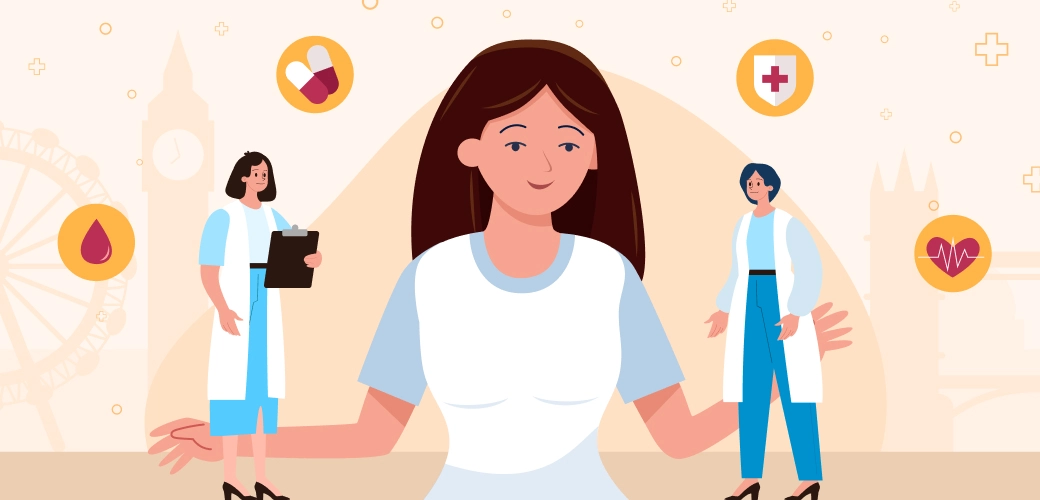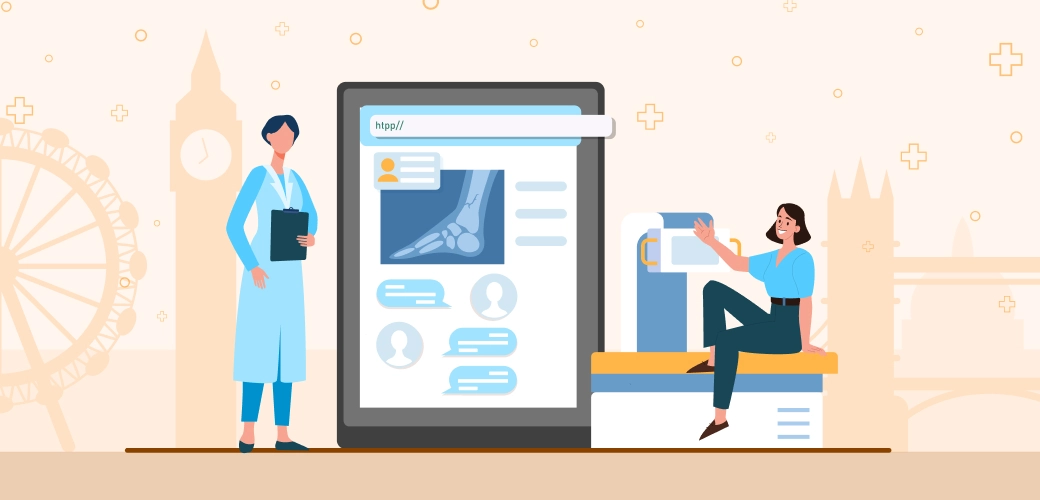

What is NHS - United Kingdom National Health Service
The health care system of Great Britain is considered one of the most progressive today. It is among the top 5 best international health care systems. Great Britain does not have a single center for managing the health care system. The National Health Service (NHS) operates here, along with the health services of Wales, Scotland, and Northern Ireland.
Great Britain spends 9.8% of its GDP on healthcare. Most of these funds come from general taxation. In general, the healthcare sector is the second largest consumer of the country's budget. Also, in addition to funding from the National Health Service, there are programs that are implemented by the Public Health Service.
The year 2012 was a fateful year for the medical field of Great Britain, when the Clinical Commissioning Groups were created, which are responsible for purchasing medical services in various medical institutions. The CCGs buy medical services for residents of a certain region, based on the need and the number of available funds. For example, the cost structure of the East Sussex CCG is as follows: 10% — for primary medicine, 60% — for secondary one, 9% — for mental health, and 21% — for other services needed by patients. The decision on the distribution of finances is made by the board of the CCG, but sometimes the Department of Health and Social Care provides recommendations on priority areas. Currently, Great Britain is going through its not best times — the shaky political situation in connection with the future change of the prime minister and the prospect of curtailing some programs is very worrying for citizens. However, medical care (both primary and specialized) remains practically free of charge for patients.
Details are Important
An average medical practice serving 10,000 people consists of 4 doctors, 4 nurses, and 12 non-medical personnel (registrars, specialists responsible for correspondence with patients, etc.).
The duties of the average medical staff include receiving chronic patients, carrying out various manipulations and procedures, and performing diagnostic tests (rapid tests, breathing tests, electrocardiograms, etc.). The nurse’s office is equipped with diagnostic devices, a computer, and a refrigerator where vaccines and medicines are stored. She does preventive vaccinations herself. By the way, an examination by an average medical staff is also sufficient here — there is no need to involve a doctor. In addition, nurses carry out educational work with patients — for this they are provided with appropriate methodical materials and recommendations. Mid-career staff can continue their education at university leading to hospital management, as well as helping family doctors improve their skills in wound care, palliative care, and more.
All medical practices of doctors are private. The NHS of Great Britain, in accordance with the concluded agreements, transfers funds to them — 99-150 pounds per patient per year. Therefore, primary care physicians are very interested in having an additional specialization, because this can be one of the decisive factors in the process of attracting patients. With the money received from the National Health Service, private practices provide a guaranteed volume of medical care and pay the salaries of doctors.
Family doctors work 5 days a week, but citizens of the country can receive medical assistance in the evenings and on weekends — for this, CCG concludes contracts with medical practitioners who are ready to work after hours.
Patient Orientation is One of the Main Principles
In Great Britain, a lot of attention is paid to patients with mental disorders, as well as patients who need palliative care or rehabilitation. The health care system in Great Britain is patient-oriented, so much attention is paid to the transfer of services to the home: being at home is often psychologically easier for the patient, and the cost of treatment is significantly reduced compared to 24-hour hospitalization. Here, social service workers come to the aid of doctors. As with the rest of the world, the UK’s population is aging, adding responsibilities and costs to primary care. However, both of them scrupulously calculate that the costs are appropriate, and the involvement of specialists is effective.

An extremely important role is played by joint decision-making with the patient regarding the choice of the therapy method. This is not just information, but motivational counseling with mandatory feedback: did the patient understand how the treatment and diagnosis will be carried out?
What About Digitalization?
People in England will receive more health services online, allowing them to check NHS records, receive messages from their GP and visit virtual wards under the government’s plans to digitize healthcare. The Digital Health and Social Care Plan sets out how patients will be able to make hospital appointments, order COVID vaccines, and receive virtual consultations through the NHS app, which 28 million people now have, by March 2023.
“We are embarking on a radical modernization program that will ensure the NHS is ready for the challenges of 2048, not 1948 when it was first created,” — Health Secretary Sajid Javid.
The plan builds on the NHS data strategy, which aims to have three-quarters of England’s adult population sign up for the NHS app over the next two years. According to it, this will give patients “more control over their own care at home, they will notice problems sooner and seek help earlier”.
According to the DHSC, less than half (45%) of social care providers use a digital social care card and 23% of care home staff do not have regular access to the internet at work. Under the latest plan, medical teams will also be able to better share information through unified digital medical and social records.

A national digital workforce strategy is to be developed to create an extra 10,500 data and technology jobs as part of a range of measures to upskill workers and make the NHS an attractive place to work for digital professionals. How to use digital technology will also be included in university curricula for degrees training future NHS workers, while affordable training will be provided to adult social care workers.
Praise or Blame? That’s the Question…
However, not everything is perfect in Great Britain, particularly from the point of view of consumers of health services.
As a rule, you have to wait for a certain time to see a specialist, depending on the workload of the family doctor. It is impossible to make an appointment “for today” unless it is an emergency. Diagnostic and treatment procedures are also carried out according to the record. Sometimes the interval between them is quite significant: for example, a patient sometimes waits almost a year for a hip joint replacement. Of course, he can get this medical service much faster — in a commercial clinic, where the operation will be carried out, for example, at the expense of private insurance. However, emergency and urgent medical care are provided without a prior appointment.
There is one more problem. Most people (including many NHS workers) are of course tired of it, but the nation’s attempt to “live with COVID to the full” is frankly breaking the back of the NHS. In 2020 and 2021, the NHS successfully coped with the peaks of the pandemic by stopping or slowing down much of its routine work. 2022 was supposed to be a year of full recovery, when record waiting lists for medical care, diagnosis, and treatment of cancer and mental health were supposed to decrease, and the burden on primary care should be eased.
It’s July now, and apart from the first omicron surge which peaked in January, the UK and the NHS have seen two more waves of COVID with just under three months between peaks. The current wave of hospitalizations caused by variants BA.4 and BA.5 will likely peak in the nearest time, but other variants will soon be ready for global rollout. In the first six and a half months of the year, the number of weekly admissions to hospitals in England with a positive result for COVID-19 averaged just over 9,000. In 2021, there were just under 6,000, with most admissions concentrated in the first two months of the year. The average in 2020 was just under 7,000.
What hides the hospitalization numbers is the growing wave of people with long-term COVID illness, which now stands at two million and is likely to be a major burden on the country’s health service and productivity for a generation. And there are many other less recognized but still deeply worrying consequences of the ongoing pandemic, including the threat to the NHS blood supply.
The constant pressure created by repeated waves of COVID is already a major reason why the NHS is nowhere near the level of activity needed to restore productivity. The NHS was now expected to perform better than before the pandemic; instead, optional activity is about 10% below 2019.
What is particularly troubling is the lack of strong political, public, or media coverage of the service sector collapse caused by COVID. There is still a great opportunity for the UK Government to make real progress with its digital initiative for the NHS for adults and pave the way for the UK to be at the forefront of digital innovation in health. However, the starting point for all of this must be to meet the needs of patients and provide services that not only make patients more accessible through digital channels but also remove many of the bottlenecks in timely access to the right treatment.
Coping with new and emerging strains of COVID, balancing its impact with other diseases that haven’t gone away, and mastering new digital innovations comes with learning. The continuation of education of doctors and nurses, including online, is of great importance. In short, there is always an opportunity to change life for the better. Rational use of time, work for results, efficiency, healthy competition, reasonable control, and responsibility — all these distinguish the organization of the health care industry in Great Britain.
Tell us about your project
Fill out the form or contact us

Thank you
Your submission is received and we will contact you soon
Follow us

